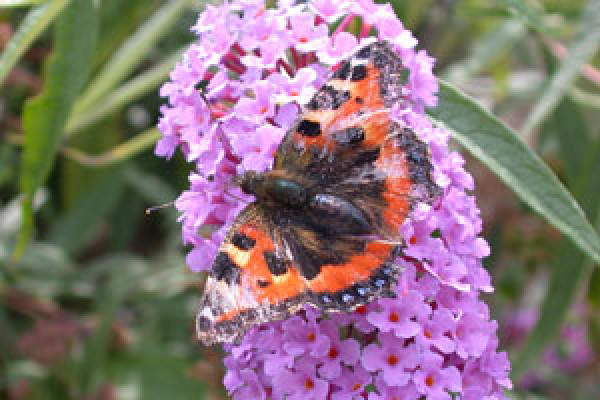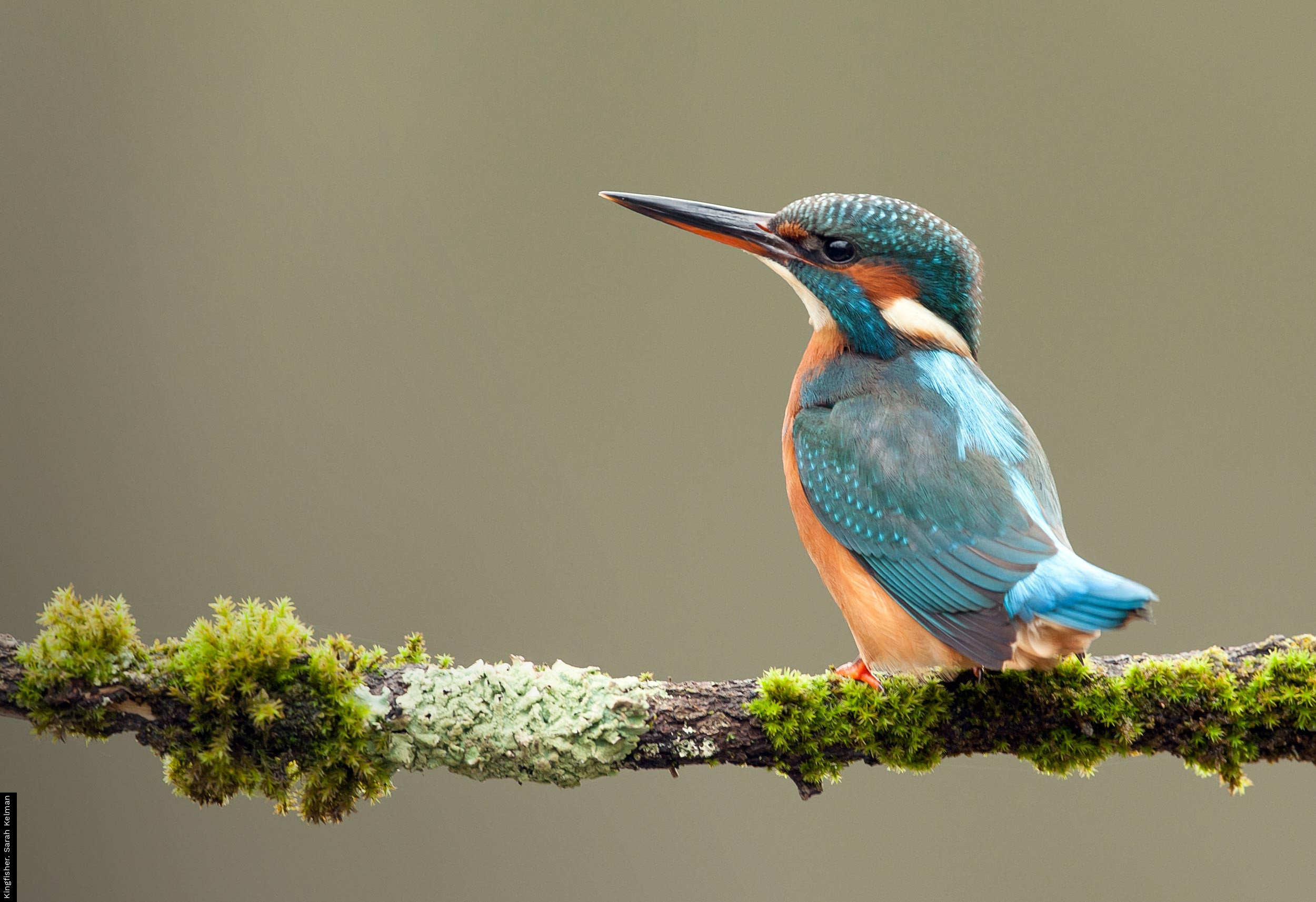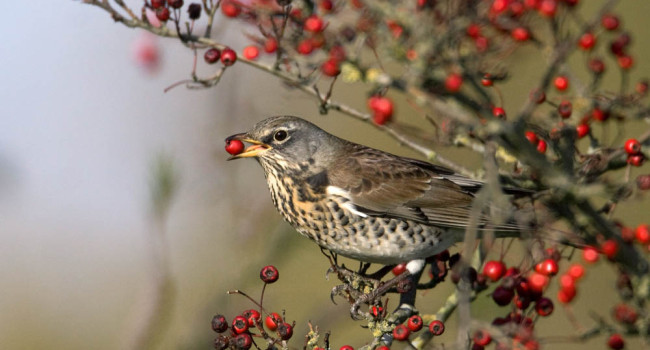Attracting butterflies and moths

Generally, butterflies that weigh more (and are less-efficient fliers) forage on plants that produce massed flowers, only bothering with solitary flowers if they are unusually rich in nectar. This strategy reduces foraging costs. Such butterflies also tend to have longer tongues and are able to access flowers where the nectar is tucked away at the end of a long tube (known as the corolla). A deep corolla restricts the clientele to long-tongued species.
Nearly all of the plants visited by butterflies are perennials, presumably because these offer greater rewards. This all suggests that you should provide plants like Buddleja davidii, Red Campion Silene dioica, Hebe spp. and even Agapanthus praecox for the longer-tongued butterflies (Painted Lady, Red Admiral, Peacock and Small Tortoiseshell). The shortest-tongued species, like the skippers, Gatekeeper and Common Blue will need flowers like those of Bramble Rubus fruticosus agg., Ice Plant Sedum spectabile, Hemp Agrimony Eupatorium cannabinum, Common Ragwort Senecio jacobaea and Shasta Daisy Leucanthemum x superbum.
Location, location, location
When it comes to suitable nectar sources for butterflies, it is not just which species you plant that is important but also their location. Butterflies much prefer to feed in sunny, sheltered parts of the garden, with scented blooms presented in large and visible displays. Try to plant species of similar height together and look at the different growth forms to make sure that the butterflies can access the flowers. Also consider your pruning regime. For example, if you have several Buddleja davidii in your garden, prune them in sequence through February, March and April. This should extend the flowering season of this plant in your garden. You can even try giving one bush a light trim in June to remove the flower buds, forcing it to flower very late (possibly up until October).
Another useful set of late-season plants are the various Michaelmas-daisies, especially Aster novae-belgii and Aster novaeangliae, since many varieties extend flowering into October. They also suit most soil types and are fairly vigorous. Most moths visit flowers at night, feeding in a similar manner to butterflies but with some differences in their preferences. For example, the ball-shaped flowers of Buddleja globosa are well used by moths but seem less attractive to butterflies.
Other plants, such as Red Valerian Centranthus rubra and Goat Willow Salix caprea are well used by both. Moths seem particularly attracted to those plants which produce their scent in the evening, such as honeysuckle Lonicera spp., Jasmine Jasminum officinale, Common Evening Primrose Oenothera biennis and Dame’s-violet Hesperis matronalis. Early season nectar is equally important for moths, with Goat Willow well used by Early Grey, Quaker and Red Chestnut moths. Late-season nectar, notably that of Ivy Hedera helix, is used by the Chestnut, a common resident moth.
Attracting breeding butterflies and moths
You have a better chance of getting a range of moth species to breed in your garden than you do butterflies and many may breed unnoticed. It will tend to be the more common and widespread species that do breed but, with widespread declines in the wider countryside, anything you can do to help is really positive. Look at which plants provide for a good range of moth species, decide if they will work in your garden then off you go!






Share this page